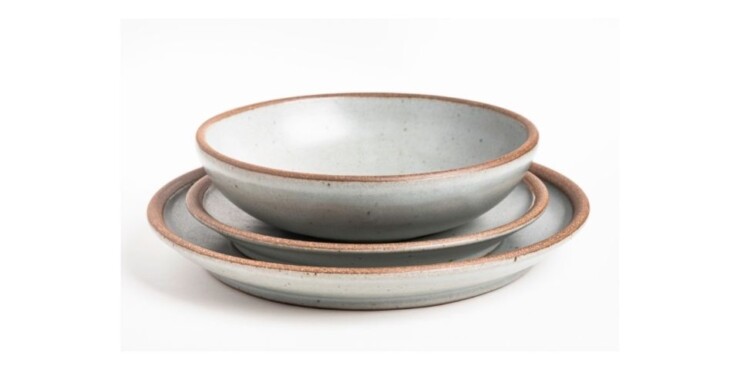One of the most commonly asked questions we get is whether our stoneware is oven safe. Surely the question of whether something is safe must be a pretty easy one to answer? Well, hopefully, this blog helps you with your next casserole or no-fluff meal.
Is stoneware oven-safe?
Yes, stoneware is safe to use in the oven. Contrary to popular belief, stoneware is not just erector-set bricks of clay that you can use to make buildings on a miniature scale. They are also a great material for making casserole dishes, pizza stone, and other kitchen items.
Stoneware is made from nonporous clay that has been fired at a very high temperature – usually around 2200 or 2300 degrees Fahrenheit. This process makes it completely oven safe and also gives it an impermeable surface.
That means it won’t absorb stains or odors, which makes it ideal for baking bread, roasting meats, or anything else you might want to cook in the oven…
What is stoneware?
Stoneware is a type of ceramic made from a mixture of clays and fired at high temperatures. Stoneware is strong, dense, and non-porous. It can be glazed or unglazed. It is often used for dinnerware or decorative pieces.
Stoneware was first developed in China during the Han dynasty (206 BC–220 CE).
It was popular during the Song dynasty (960–1279) and was then introduced to Japan during the Tang Dynasty (618–907 CE). It became popular in Europe during the 17th century.
The word “stoneware” is often misused as a generic term for any pottery that is not porcelain or earthenware, including some types of slipware and earthenware. The term “stoneware” can also be applied to glazed ceramics, particularly when using a reduction process that produces a coarse-grained, porous body.
What is the difference between stoneware and ceramic?
The main difference between stoneware and ceramic is the firing temperature. Stoneware is fired at higher temperatures than earthenware (the type of clay used for terracotta flower pots, for example). This gives stoneware a much denser and harder finish, making it more durable, less porous, and more resistant to chipping.
Stoneware is also easier to glaze compared to other types of pottery, as it can withstand higher firing temperatures.
Both stoneware and ceramic are non-porous and food safe, meaning they’re suitable for use in the kitchen or even as decorative pieces around the home.
How can you tell if stoneware is oven-safe?
A good way to tell if a certain stoneware piece is oven-safe is by looking at the bottom of it. If it does not say “oven-safe,” then you should not put that piece in the oven.
Stoneware is generally made from clay and stone, though you can find variations with other materials. Some brands of stoneware are oven-safe, but depending on how your items were treated, they may only be safe up to a certain temperature.
What temperature is safe for stoneware?
Stoneware is safe up to 450 degrees Fahrenheit or 232 degrees Celsius. However, if you’re heating stoneware in the oven,
It’s best to use the lower end of this range. If you bake at a higher temperature than 400 F, you should use stoneware only as an oven-safe serving dish.
While stoneware is generally considered safe, there are still some things you should know before using it in your kitchen.
Can stoneware break in the oven?
Yes, it can! We’ve all heard of the phrase “handle with care.” Even though stoneware is durable, it does not mean that it is invincible. If you accidentally drop your stoneware, it may break or chip.
In addition, you should never expose stoneware to sudden changes in temperature because this can cause thermal shock and make the item break into pieces.
Thermal shock can also occur when you place cold stoneware on a stovetop burner or in an oven that is already hot. Always make sure your stoneware is at room temperature before placing it in a hot oven or on a stovetop burner.
Final Thoughts
Nevertheless, the manufacturers don’t guarantee that stoneware will never break. It appears as though stoneware is indeed oven safe. One thing to keep in mind, however, is that oven temperatures can vary from one brand of oven to another. Check the manufacturer’s guidelines for specific information on your model.

